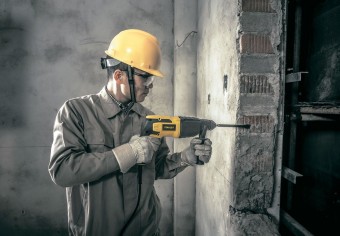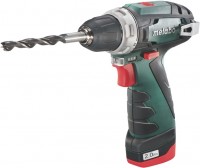Household tool: choose a drill
We independently test the products and technologies that we recommend.
By the way, a modern drill can not only drill holes in metal, wood, plastic, concrete or brick wall, but also wrap and remove screws and self-tapping screws, polish and grind with special nozzles and even mix liquid substances. But which one do you prefer? Only in the catalog on our website there are almost six hundred models. How to choose the one that is right for your purposes? Let's find out.
 |
What is the difference?
In addition to the fact that different models differ in power, they can also be with a reverse, with a shock-rotary action, with step or smooth speed control, with a keyless (quick-clamping) or key chuck. Also pay attention to the presence of an additional handle - it will be convenient to work with it both left-handed and right-handed.
Rotary hammer
An impact drill differs from a conventional one in that, in addition to rotational, its drill performs translational movements at the same time. This mode increases the productivity of the tool and makes it possible to drill in harder materials, such as brick and concrete. When working with wood, the impact mechanism must be turned off - soft material will prick.
Angle drill
For drilling in hard-to-reach places, a drill with a gearbox is used, which has the shape of the letter "G", and a cartridge is attached to it. It is convenient to work with such a drill in a limited space, for example, under the hood of a car.
Drill driver
You can also drill holes with a drill driver. But its main purpose is to wrap and unscrew screws, screws and self-tapping screws. Usually this is a tool of small power and size. It is very convenient for assembling furniture and performing small jobs. True, drilling a hole in brick or concrete with such a drill is very problematic.
Network or battery?
Two sources can be used to power a hand-held power tool - a network or a battery. It is advisable to use a drill with a battery where there are no sockets or you need to move from place to place, and it is inconvenient to drag the wire along with you. And also when working in damp rooms, where there is a high probability of electric shock. Such a tool also has disadvantages - the high cost of the battery and the short operating time between recharges. And for uninterrupted work, there should be two of them. One works, the other is restored in the charger. Mains powered drills are more powerful and easier to maintain.
 |
Drill change
Typically, the drill is mounted in a classic cam (toothed) chuck with a key. An alternative is a keyless chuck. In this case, a “light movement of the hand” is sufficient to secure the drill. Such a cartridge clamps the drill no worse than a toothed one. There are single and double sleeve keyless chucks. A two-sleeve cartridge consists of two rotating rings - one is clamped, the other is loosened. Single case chucks are usually marked press+lock and auto-lock - a very convenient and quick option for changing drills.
Screwdrivers often use a bit chuck. Hex sockets are inserted into the spindle. This type of chuck is very handy when you need to drive screws with different heads. Often, the tool kit includes a set of nozzles for all occasions.
Professional or household?
A professional drill differs from a household one in its allowable load, that is, the number of hours during which the drill can work without overheating the motor windings. Professional can be used from 6 to 10 hours a day. They are more reliable and powerful than household drills, have a longer service life. You can work with household ones for less than 4 hours, and every 15 minutes it is recommended to take breaks for 15 minutes as well. True, they are cheaper and not so heavy.
Selection process
How quickly and easily the drill will cope with the task depends on the power of the tool. This indicator is in the range of 300 – 1,500 watts. Other important characteristics are the maximum drill diameter and rotation speed. To work with soft materials and small diameter drills, it is enough to buy a drill with a power of up to 500 watts.
If you plan to use attachments for grinding, polishing or cleaning surfaces, buy a drill with a high number of revolutions. This will ensure high performance. Most models provide rotation speeds up to 3,000 rpm. But there are also faster ones, for example, the DeWALT D21583K professional three-speed drill can reach speeds of up to 4,600 rpm. True, such a tool costs approximately $ 1,500.
But the main selection criterion is the frequency of use of the tool and the amount of work performed by the drill. For a home workshop, a household drill is enough, but if this is your working tool, there is no point in saving. The arguments are obvious - a professional device is designed for intensive long-term work and will last much longer than a household one.
Manufacturers
In the CIS market, the most popular products are from manufacturers such as Bosch, Makita, Hitachi. Bosch drills are multifunctional, quite simple and convenient. Professional models are made in factories in Germany and Switzerland, while household ones are mainly made in Poland and China. The cost is from $100 to $3,000. The Hitachi brand is also in demand. These Japanese products belong to the "premium" class. Such “toys” cost from $50 to $2,300. Another Japanese company, Makita, produces a wide range of high-quality models from compact household to professional ones for drilling reinforced concrete. The price is in the range of $70–350.
Articles, reviews, useful tips
All materials
















